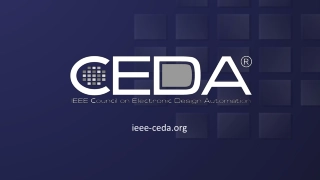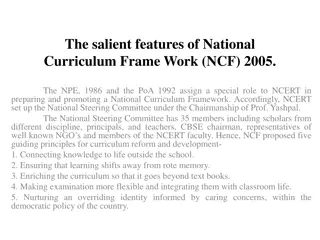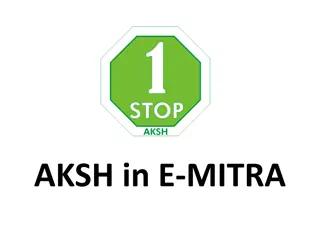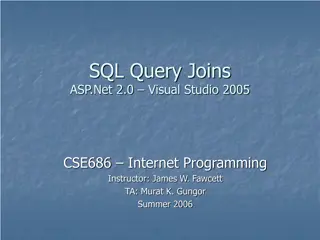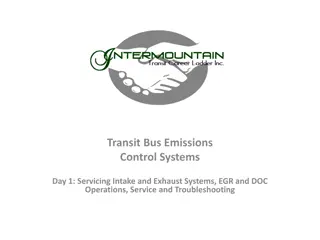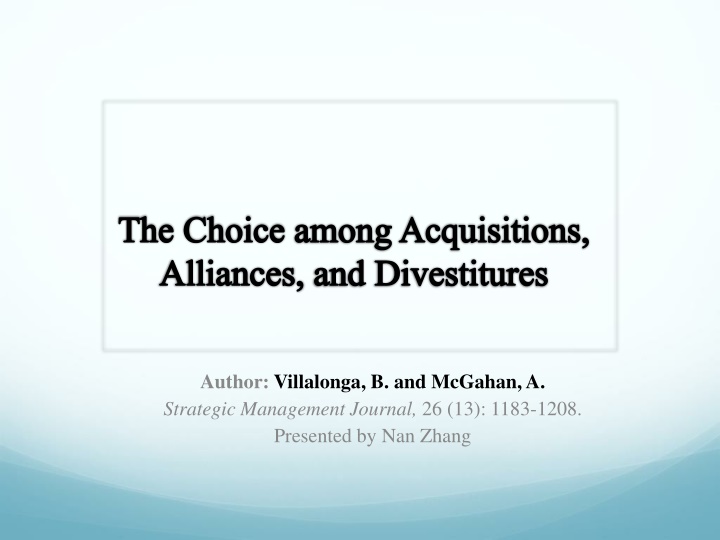
Strategic Management Choices: Acquisitions, Alliances, and Divestitures
Explore how firms decide between acquisitions, alliances, and divestitures to expand or contract boundaries based on a study analyzing 9,276 transactions by Fortune 100 companies from 1990 to 2000.
Uploaded on | 0 Views
Download Presentation

Please find below an Image/Link to download the presentation.
The content on the website is provided AS IS for your information and personal use only. It may not be sold, licensed, or shared on other websites without obtaining consent from the author. If you encounter any issues during the download, it is possible that the publisher has removed the file from their server.
You are allowed to download the files provided on this website for personal or commercial use, subject to the condition that they are used lawfully. All files are the property of their respective owners.
The content on the website is provided AS IS for your information and personal use only. It may not be sold, licensed, or shared on other websites without obtaining consent from the author.
E N D
Presentation Transcript
The Choice among Acquisitions, Alliances, and Divestitures Author: Villalonga, B. and McGahan, A. Strategic Management Journal, 26 (13): 1183-1208. Presented by Nan Zhang
About the Authors Bel n Villalonga Anita M. McGahan Leonard N. Stern School of Business, NYU School of Management, Boston University Associate Professor of Management and Organizations Visiting Professor of Strategy and Innovation Ph.D., Economic and Management Sciences, 2000 (Universidad Complutense de Madrid) Ph.D., Business Economics, 1990 (Harvard University) Ph.D., Management, 2001 (UCLA) 2
Overview Introduction Determinants of Boundary Choice Data Theory, Hypotheses, and Results Conclusion 3
Introduction Earlier empirical studies of boundary choice look at: Alternative governance structure (transaction focus); Choices that firms make between acquisitions and alliances (firm focus); Joint decisions by two or more firms to ally (dyad). Motivation: Lack of studies about selling (divestitures) vs. buying or making (acquisitions). Divestitures, alliance and acquisitions can fit into the three groups defined by earlier studies. Transaction: Divestitures and acquisitions both represent reactions to changes in the transaction costs created by specialized assets. Firm: Divestitures and alliance are alternative ways to contract boundaries, just as acquisitions and alliances are alternative way to expand boundaries. Dyad: Divestitures are a way of allocating control of resources between parties. Objective: Examine how firms choose among acquisitions, alliances, and destitution when deciding to expand or contract boundaries. 4
Acquisition, Alliance and Divestiture Alliances & Joint ventures Divestitures Acquisitions Low Integration High Integration 5
Data 9,276 acquisitions, alliances, and divestitures announced and completed by 86 members of the Fortune 100 between 1990 and 2000 Data are from the SDC (Joint Ventures and Alliances; Mergers and Acquisitions). Deal types grouped into three, seven, and nine categories for refined analysis. Dependent variable: governance form 7
Variable Summary 8
Theory, Hypotheses and Results (1) Logic Hypothesis Variable Sign Result Focal firm attributes H1a: The firm s technological resources are associated with the choice of acquisitions over alliances, and alliances over divestitures. Intangible resources (RBV +TCE) Highly valuable technological resources more integrative forms. Focal firm s technological resources + Brand capital cannot be shared: advertising- intensive firms more integrated forms. H1b: The firm s marketing resources are associated with the choice of acquisitions over alliances, and alliances over divestitures. Focal firm s marketing resources + H2a: H2b: H2c: Ownership structure (Agency) Managers are incentive to maximize assets under the firm s control (agency problem) prefer acquisition to alliance, then to divestitures higher insider ownership, blockholder ownership and institutional ownership can reduce agency problem. H2a: The level of insider ownership of the firm is associated with the choice of divestiture over alliances, and alliances over acquisitions. H2b: The level of blockholder ownership of the firm is associated with the choice of divestitures over alliances, and alliances over acquisitions. H2c: The level of institutional ownership of the firm is associated with the choice of divestitures over alliances, and alliances over acquisition. Insider ownership (H2a) Blockholder ownership (H2b) Institutional ownership (H2c) _ 9
Theory, Hypotheses and Results (2) Logic Hypothesis Variable Sign Result Focal firm attributes contd. H3a: H3b: H3c: Acquisition, alliance, divestiture experience (Organizational learning) Value generated depends upon capabilities developing through repeated experience with these governance forms. H3a: The firm s acquisition experience is associated with the choice of acquisitions over both alliances and divestitures. H3b: The firm s divestiture experience is associated with the choice of divestitures over both alliances and acquisitions. H3c: The firm s alliance experience is associated with the choice of alliances over both acquisitions and divestitures. Acquisition experience (H3a) Divestiture experience (H3b) Alliance experience (H3c) + (H3a) _ (H3b) +, - (H3c) Prior diversification (RBV + TCE + Agency) Greater prior diversification more activities with the transaction more integration ex post. Diversification managers are incentive integration. H4a: The firm s diversification level is associated with the choice of acquisitions over alliances, and alliances over divestitures. Diversification + Diversification- Much of the corporate restructuring activity that took place during the 1980s and 1990s was aimed at reversing the diversification undertaken in earlier decades. H4b: The firm s diversification level is associated with the choice of divestitures over alliances, and alliances over acquisitions.
Theory, Hypotheses and Results (3) Logic Hypothesis Variable Sign Result Attributes of the relationship between the focal firm and the target or partner firm Industry activity (RBV + TCE + Asymmetric Information) Greater relatedness implied lower cost of integration more integration. Greater relatedness lower asymmetric information more integration. H5: The relatedness between the focal firm and the target (or partner) firm is associated with the choice of acquisitions over alliances, and alliances over divestitures. Focal target firm relatedness + More balanced size More difficult for any party to be digested by another Less integration. - Size balance ( Digestibility theory) H6: The size balance between the focal firm and the target (or partner) firm is associated with the choice of divestitures over alliances, and alliances over acquisitions. Size balance Prior alliance create trust alliance. Prior alliance create value alliance. +, - Prior alliances (Social embeddedness, Real options, and Corporate refocusing) H7: The number of prior alliances between the firm and the target (or partner) firm is positively associated with the choice of alliances over both acquisition and divestitures. Prior alliances Relatedness (TCE, RBV, and Asymmetric information) More close between activities subject to transaction and firm activities integration. H8: The relatedness between the firm and the activity that is subject to the transaction is associated with the choice of acquisitions over alliances, and alliances over divestitures, Focal firm transaction relatedness +
Theory, Hypotheses and Results (4) Logic Hypothesis Variable Sign Result Transaction Focal Firm Relationship Attributes More spillover effect less effect of governance specialization. +, - Governance form specialization (Spillover) H9a: The firm s governance specialization is insignificantly associated with the choice of governance form. Governance specialization Symmetric spillover more integration H9b: The firm s governance specialization is associated with the choice of acquisitions over alliances, and alliances over divestitures. Governance specialization + Asymmetric spillover less integration. Governance specialization - H9c: The firm s governance specialization is associated with the choice of divestitures over alliances, and alliances over acquisitions. Recency of same-form governance experience (Spillover) Learning effect is more important for acquisition integration. H10a: The recency of the firm s same form governance experience is associated with the choice of acquisitions over alliances, and alliances over divestitures. Recency of same-form experience + - Learning effect is more important for divestiture less integration. H10b: The recency of the firm s same form governance experience is associated with the choice of divestitures over alliances, and alliances over acquisitions Recency of same-form experience 12
Theory, Hypotheses and Results (5) Logic Hypothesis Variable Sign Result Target/Partner Firm Attributes and Transaction Attributes Intangible resources (RBV) See H1a. H11a: The target (or partner) firm s technological resources are associated with the choice of acquisitions over alliances, and alliances over divestitures. Target s technological resources + See H1b H11b: The target (or partner) firm s marketing resources are associated with the choice of acquisitions over alliances, and alliances over divestitures. Target s marketing resources + Market transaction costs and internal organization costs (TCE) Higher value of interaction between uncertainty and asset specificity (true cost of transaction) integration. H12a: The interaction between uncertainty and asset specificity is associated with the choice of acquisitions over alliances, and alliances over divestitures. Asset specificity + - H12b: The internal organization costs of integrating the target firm into the focal firm are associated with the choice of divestitures over alliances, and alliances over acquisitions. Internal organization costs 13
Main Results 14
Additional Results Boundary-expanding and boundary-contracting forms 15
Conclusion Supports are founded by findings. The combined RBV, TCE and internationalization theory is supported. Agency theory also finds mixed support in the results. The study provides strong support for organizational learning explanations. Results imply that a multi-theoretical approach is needed to study firms boundary choices Limitations Emphasis on the Fortune 100 firms Validation of proxies (i.e., governance form specialization, recency of same-form experience)? Future research Alliances vs. divestitures (boundary-contracting choices) Exploration of organizational learning explanations 16


